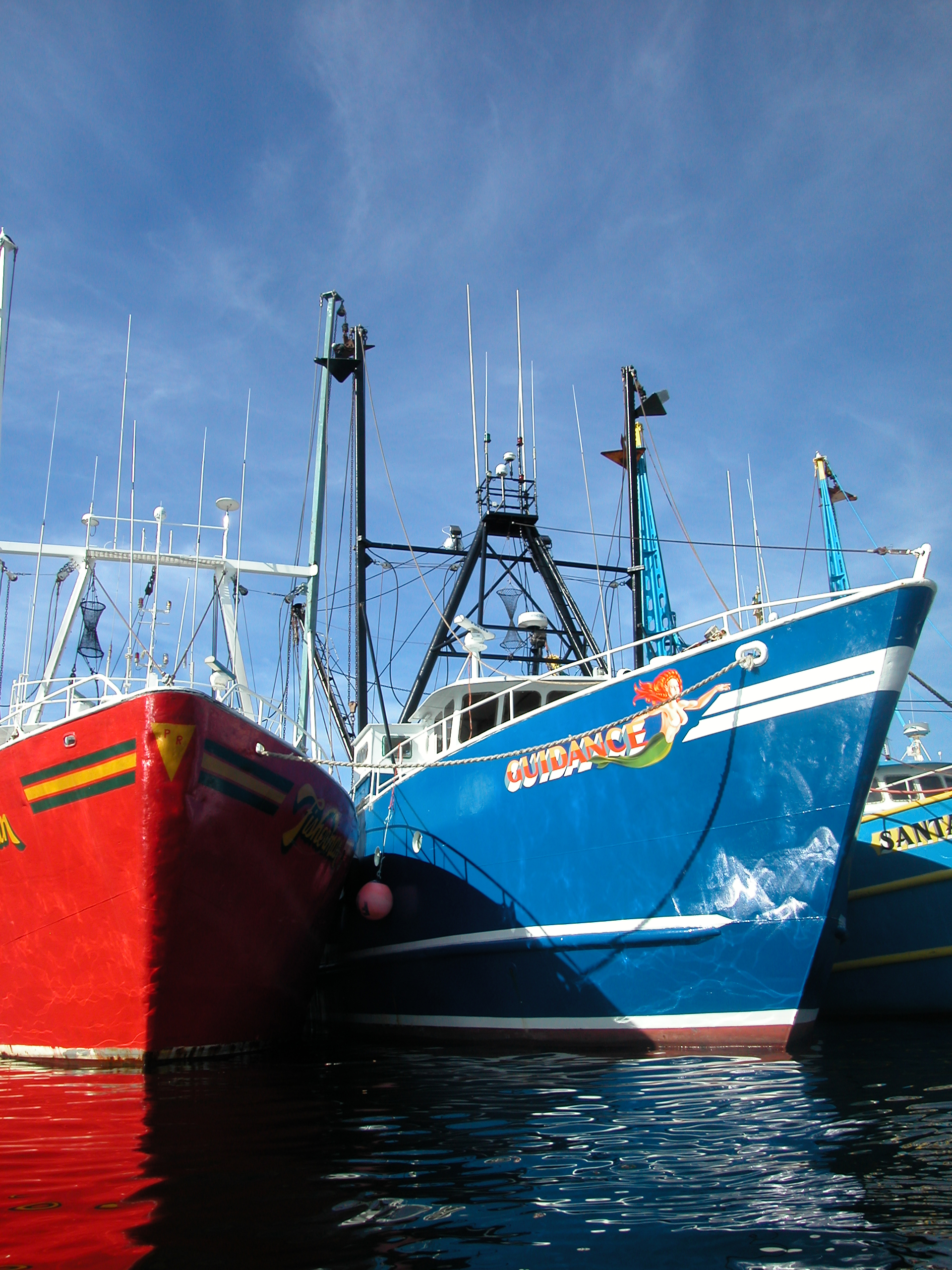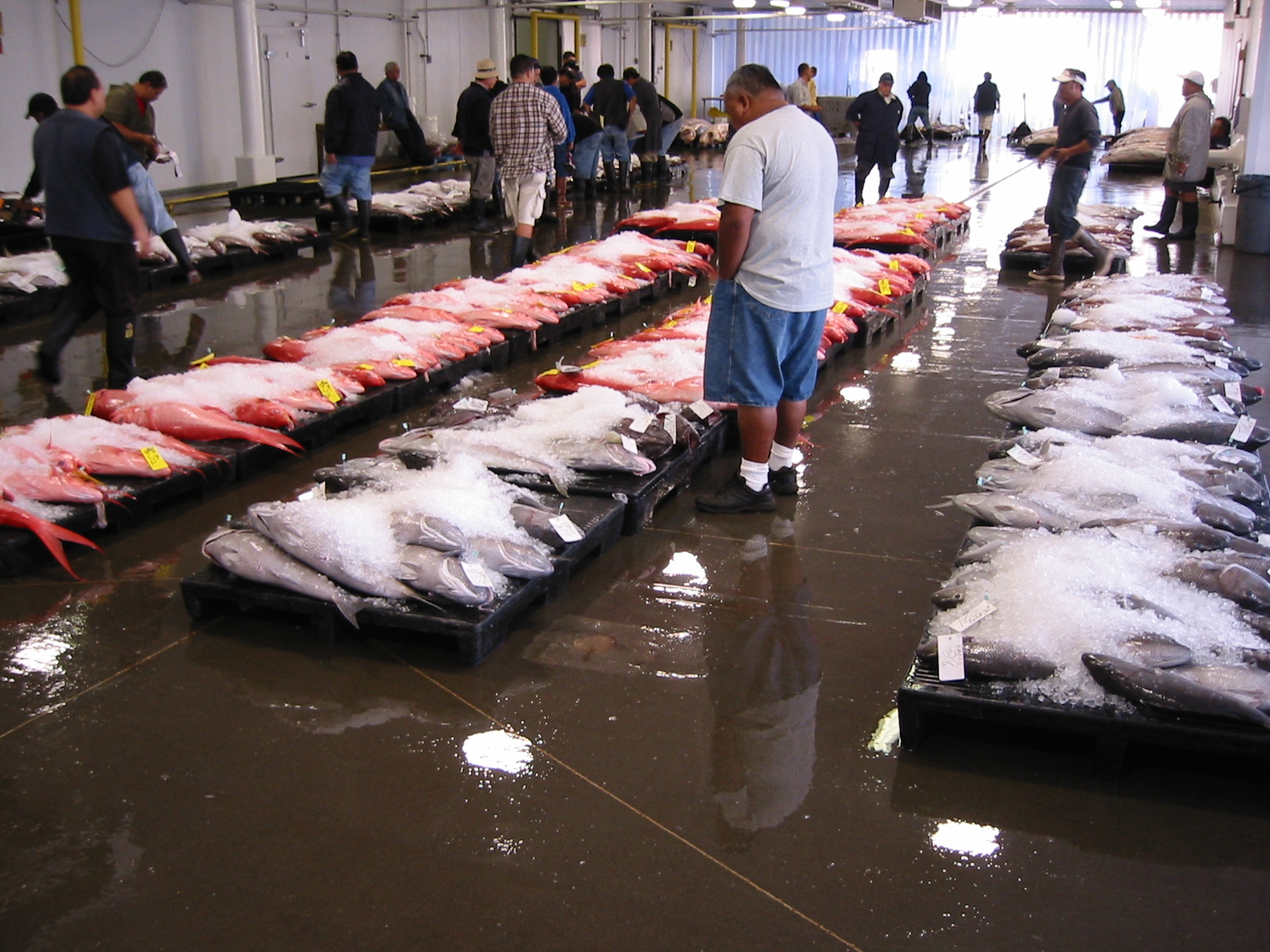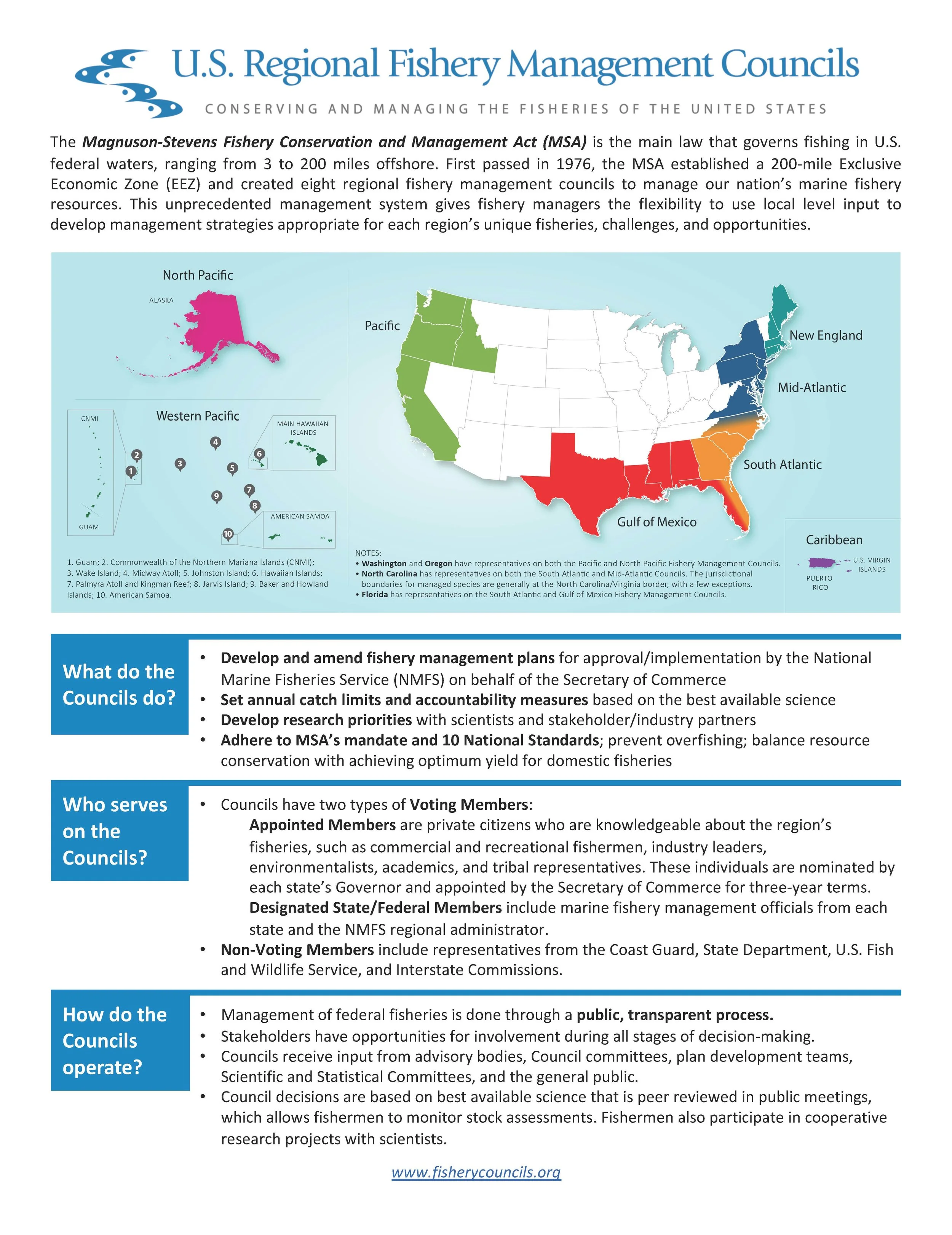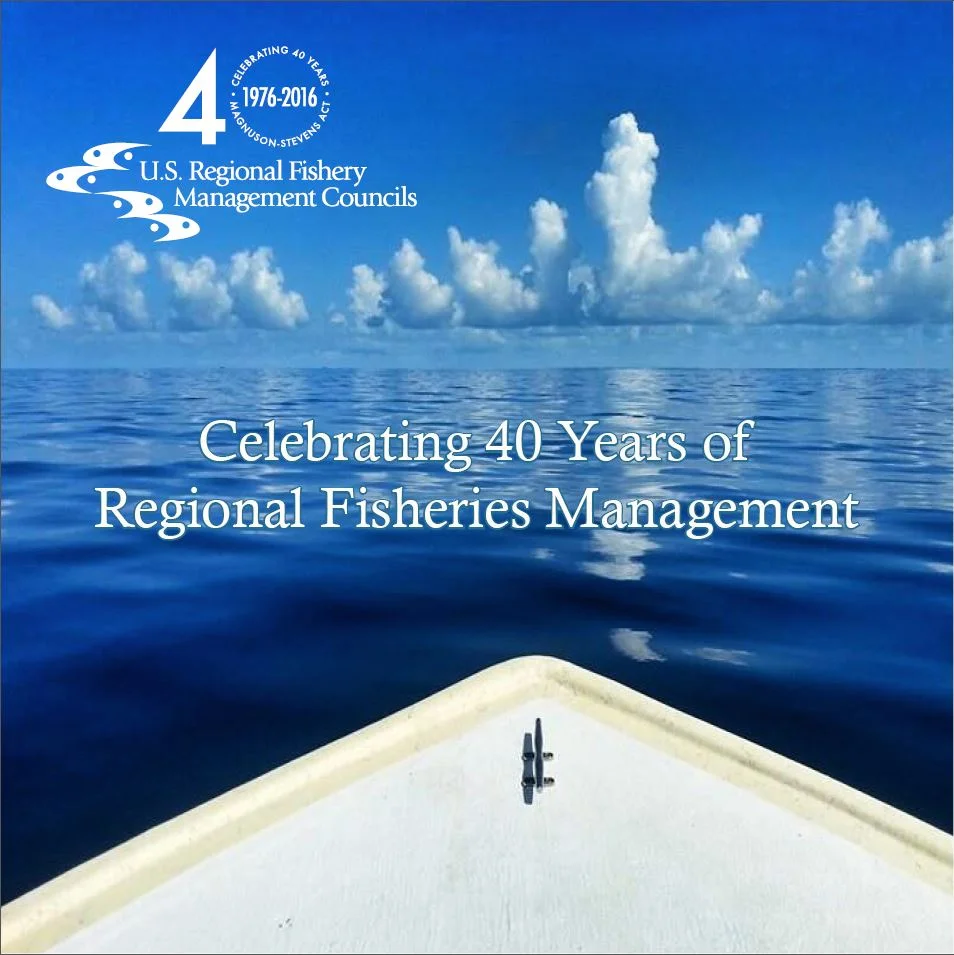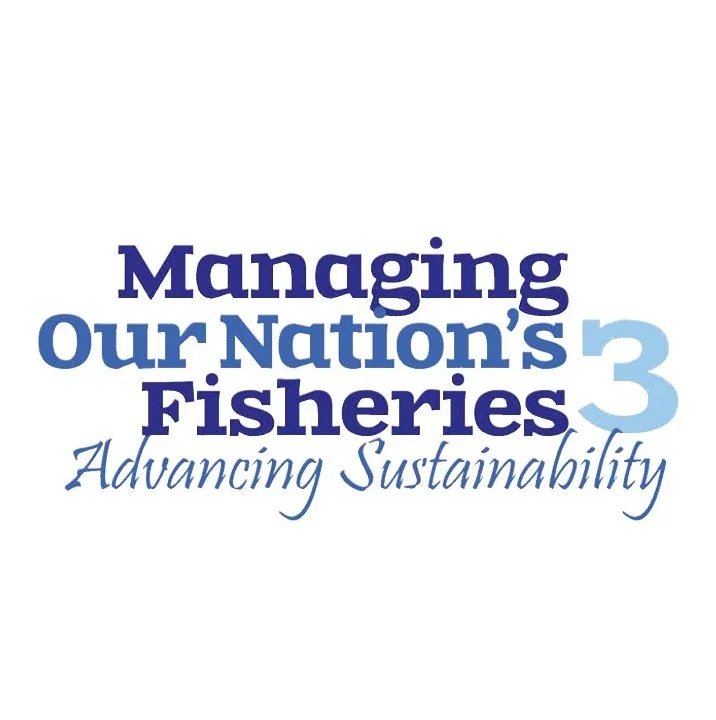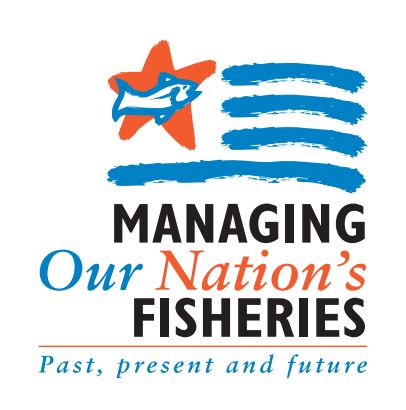About the Councils
The Magnuson-Stevens Fishery Conservation and Management Act (MSA) is the primary law that governs marine fisheries management in U.S. federal waters. First passed in 1976, the MSA established a 200-mile Exclusive Economic Zone (EEZ) and created eight regional fishery management councils to manage fishery resources in federal waters.
The main function of each Council is to prepare fishery management plans (FMPs) and associated regulations for fisheries requiring conservation and management within their region. These FMPs are designed to prevent overfishing, rebuild depleted fish stocks, and ensure sustainable fishing practices. The Councils must follow the guidelines outlined through the MSA, including 10 National Standards. Once approved by the Council, FMPs and other management measures are submitted to the National Marine Fisheries Service for review and implementation.
The Councils make management decisions through a transparent, collaborative process that includes extensive public input, scientific research, and consideration of economic and social impacts. They work closely with federal and state agencies to coordinate efforts and ensure consistency in fisheries management across the nation.
Each Council is composed of a diverse group of stakeholders, including commercial and recreational fishermen, seafood processors, conservationists, scientists, and other experts. This unique management system gives fishery managers the flexibility to use local level input to develop management strategies appropriate for each region’s unique fisheries, challenges, and opportunities. Learn more about each Council on the pages linked below.
Council Brochures and Flyers
Managing Our Nation’s Fisheries
The third Managing Our Nation's Fisheries conference was held May 7-9, 2013 in Washington, D.C.
The 2005 Managing Our Nation's Fisheries Conference was held March 24-26, 2005 at the Omni Shoreham Hotel and Conference Center in Washington, D.C.
The 2003 Managing Our Nation's Fisheries Conference was held November 13-15, 2003 at the Omni-Shoreham Hotel in Washington, D.C.

